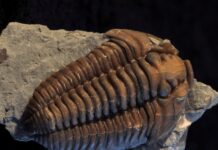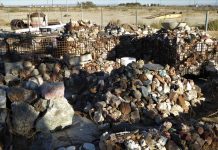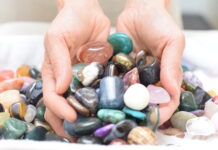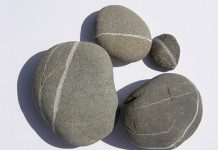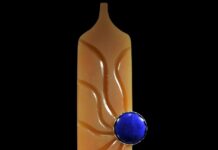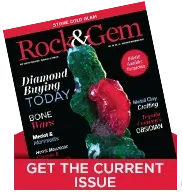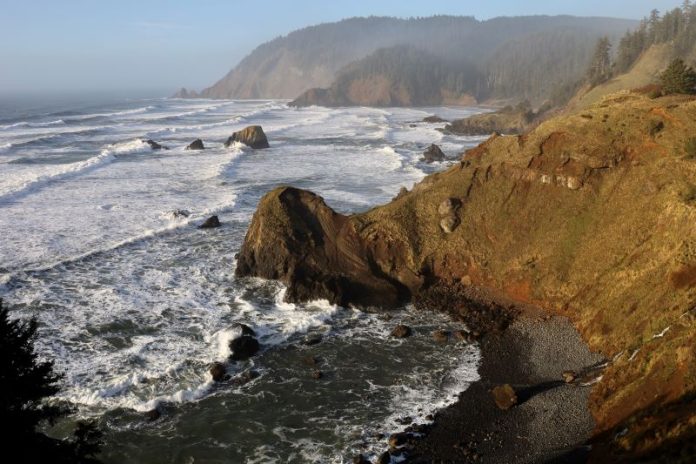
Oregon coast rockhounding is a geological wonderland, full of hidden gems, curious oddities and buried treasures. It’s a paradise for anyone seeking some of Oregon’s surf-tumbled magic. The dramatic scenery and enchanting terrain are only one facet of the magnetism of this place. There is always mystery and opportunity, a combination that makes for some of the most breathtaking treasure hunting, particularly if your treasure is the different rocks and gems found here.
Be Careful Around Moving Water
When visiting for Oregon coast rockhounding, it’s wise to be as prepared as possible. Moving water is one of the main things to keep in mind. It is fascinating to watch but can be hazardous. Be mindful, take heed to all signage, and exercise practical judgment. Coastal storm surges bring extreme amounts of wind and rain and can result in sneaker waves. If you can’t see the horizon through the surf, sneaker waves are even more possible.
Even away from the shoreline, atmospheric rivers also flood coastal watersheds. Anyone hunting the beach shores, or the banks should be wary of the risks. Ironically, the aftermath makes for some of the best rockhounding conditions. Erosion, from powerful waves and high water, frees all types of different concretions, geodes and nodules from their host rock to eventually become prized finds.
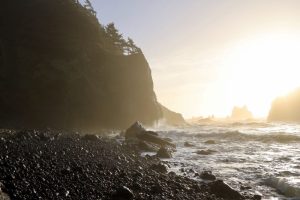 Different Times = Different Circumstances
Different Times = Different Circumstances
The time of year, even the season you visit for Oregon coast rockhounding, will have both unique circumstances and challenges to have a successful hunt. Wintertime is arguably the best time of year for rockhounding and it’s also when the ‘gem of the coast’ hosts its annual agate festival. Rain can make stones look different when wet and oftentimes that alone can make the difference in coming across some of your first finds. Endless waves batter the sea cliffs and surf-tumble gravel along the shorelines so much that sometimes bedrock is exposed. King tides are strong enough to throw buried treasures onto the beaches and rocky shores. For best results, wait until there’s an outgoing tide the morning after the storm, and after king tides have ended. Another perk of winter rockhounding is the lack of competition. Tourism on the coast in the winter months is significantly less than during peak season. With fewer people to potentially challenge, you just need to be prepared and brave the elements.
Summertime comes with a whole different set of rules for Oregon coast rockhounding. This is when most of the tourism happens and for good reason. The weather is comfortable, the water temperature is at its warmest, and the waves are at their most mellow. Time it right and you can experience some of the lowest negative tides on the coast. With those you may even be able to access a typically secluded beach or secret sea cave that you would normally never be able to access. The challenge is the increased traffic and competition that comes with the nice beach days. This is sometimes when it’s good to break away from beachcombing and venture off into the mountains and splash into river rockhounding.
During the summer months water levels throughout the coastal range rivers are at their lowest points and provide easier gravel bar access. When Oregon coast rockhounding, consider a kayak too, having the opportunity to get further away from popular spots is an absolute game changer.
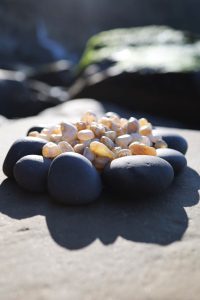 Local Finds While Oregon Coast Rockhounding
Local Finds While Oregon Coast Rockhounding
Before each trip, it’s helpful to research what materials can be found in the area, how best to find them and loosely where to look. It’s a great idea to read up and have on-hand images of the items on your list. There are many examples and places to find information. One way to learn while supporting the community you are visiting is to pay a visit to a local historical cultural center or pioneer museum. There are usually fantastic local materials on display showcasing everything from specimen pieces of lapidary art to handmade jewelry, ornamental pieces and indigenous stone tools.
A short trip over the crest of the coast range is the Rice Northwest Museum of Rocks and Minerals. The museum hosts many activities and many educational opportunities for learning about the countless minerals found in nature with an emphasis on materials found in the Pacific Northwest. Once or twice a year they also host mystery mineral days where you have the opportunity to bring in a handful of unknown pieces for identification.
Another indisposable resource for Oregon coast rockhounding can be found online by researching the state Department of Geology and the mineral industries’ older miscellaneous papers and publications. They’re equally fascinating reads for any rockhound interested in learning some of the old secrets lost to time. Colleges with geology departments and state geologists are invested in ongoing research and some institutions are even willing to test field samples and collaborate with individuals on mineral identification techniques and interpretation.
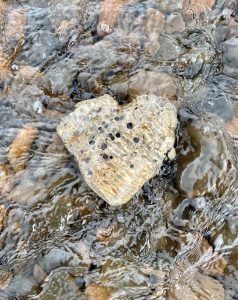 Oregon Coast Rockhounding: Gem Deposits
Oregon Coast Rockhounding: Gem Deposits
Gem deposits within the coastal zone serve as important tourist attractions and also provide adventure and intrigue for locals as exciting new deposits are discovered. The most sought-after gems on the coast are cryptocrystalline varieties of quartz, such as chalcedony, agate and jasper. Among those, some of the most prized are agates of rare colors like green, blue, black, blue/ black, pink or the rarest purple, also those containing various inclusions such as moss, dendritic or sagenitic.
Most agate found on the coast will likely be clear to smokey in color with an occasional blood orange carnelian and vary from the size of jelly beans to jawbreakers. These can be found on any stretch of beach given the right circumstances and throughout the entire coast range. Tillamook, Lincoln, and coastal Lane counties have some of the best rockhounding opportunities to date. A lucky rockhound might even find one of the few monster agates that have been recorded being found along the coast. Certain areas have yielded wind-faceted ventifact agates, water-filled enhydros and even silicified corals.
A considerable amount of agatized and opalized petrified wood can be found throughout the coast range. Sometimes it is in the forms of intact tree and limb casts which formed when the original wood was engulfed by lava and destroyed, but leaving a cast within the lava, the cavity subsequently was filled with agate over time.
There can also be fossil worm-bored teredo wood found on a few different central coast beaches not too far from other well-known fossil beds. Miocene-era marine bivalve, gastropod and mammal bone fossils are typical beach finds when searching within the right formation, though the challenge is not so much finding them, it’s finding them intact. The same forces that expose the fossils are also the same ones that destroy them. Finding a worthy specimen requires the right timing, a sharp eye, and oftentimes a good rock hammer. What may be there one day, may not be there the next. One of the cooler things you can encounter is a gastropod fossil that has been replaced by calcite, pyrite or chalcedony. Some bivalve fossils contain water before fossilization and grow rock crystals within like a geode or can form into a solid cast agate nodule.
Besides the typical river and beach finds, there are plenty of other treasures to be found while Oregon coast rockhounding. Some come across the entire Pacific Ocean from Japan in the form of beautiful glass floats. Some have been buried on the ocean floor for hundreds of years and wash up in the form of shipwreck. Ultraviolet flashlights can be used to help detect certain items since many different agates and brecciated jaspers are full of materials that fluoresce under ultraviolet light.
Local life and lore along coastal communities is built upon the relationship to the ocean, and what it brings to shore. Stories of treasure, and the fantasy of the great unknown, are as present and as important along the coast as good rain gear. There’s even a resident leprechaun who visits the coast each year on St. Patrick’s Day and reveals clues to hidden lapidary treasure, the coast’s version of gold. The Oregon coast rockhounding communities are continuing to grow, and with that growth is more diversity and accessibility for the adventurous, good stewards of the coastal landscape.
This story about Oregon coast rockhounding previously appeared in Rock & Gem magazine. Click here to subscribe. Story by Eric Davis.



